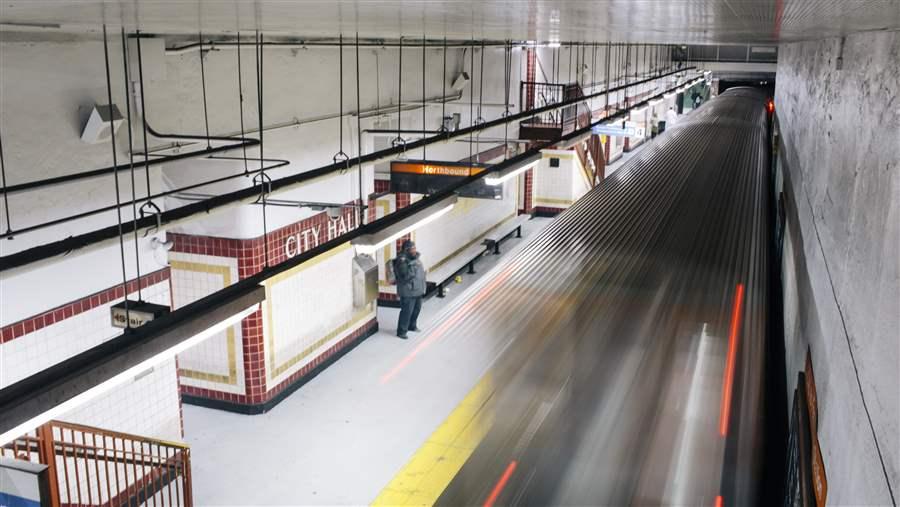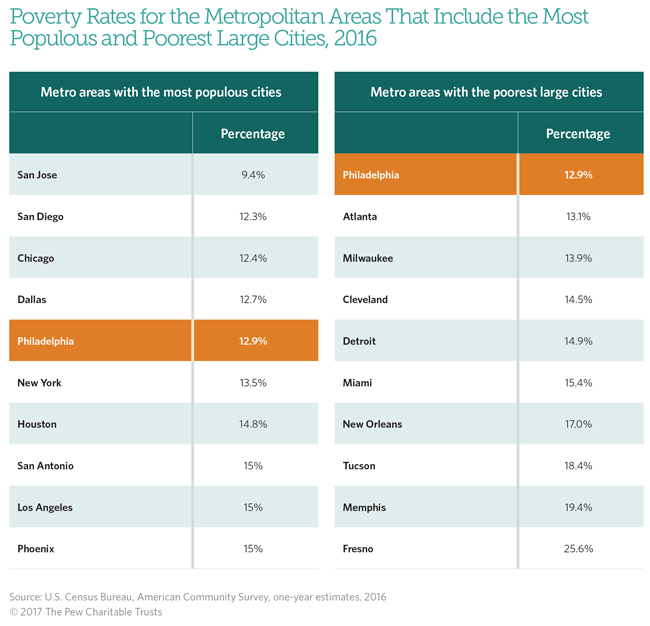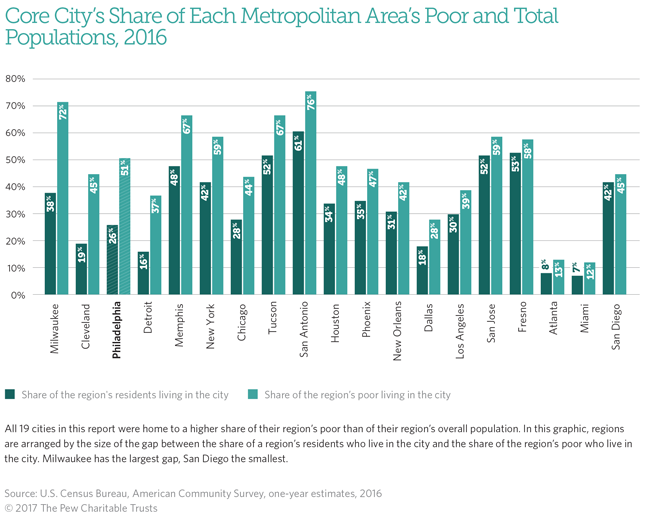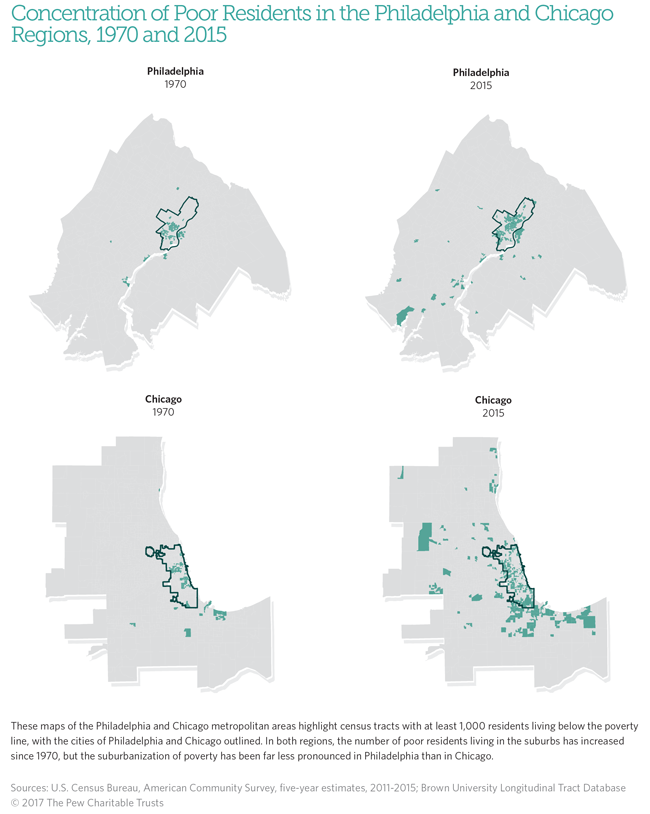City vs. Suburbs: How the Geography of Poverty in Philadelphia Compares With 18 Other Metropolitan Regions
In the Philadelphia metropolitan region, the poor are more highly concentrated in the city itself than is the case in nearly all of the other regions studied in our November 2017 report, “Philadelphia’s Poor: Who They Are, Where They Live, and How That Has Changed.”
Philadelphia is a high-poverty city in a relatively low-poverty region. Of the regions incorporating the 19 cities studied in our report, only four had lower 2016 regional poverty rates than metropolitan Philadelphia’s 12.9 percent, and of those, only San Jose has a substantially lower rate.
City vs. suburbs
Another way of looking at poverty within these metropolitan areas is by examining the share of the poor who live in the core city as opposed to the rest of each region. In the Philadelphia region, the poor are more highly concentrated in the city than they are in nearly all of the other regions studied in this report. Although the city has 26 percent of the region’s residents, it accounts for 51 percent of the region’s poor, a difference of 25 percentage points. Only the Milwaukee region has a significantly larger city-suburban gap, while Cleveland’s gap is slightly larger than Philadelphia’s.
In the Philadelphia region, poor whites are less concentrated within the core city than are the poor of other racial groups. Twenty-nine percent of the region’s poor whites live within the city limits, compared with 57 percent of poor Hispanics and 69 percent of poor blacks.
To be sure, there are more poor people living in the suburbs, both in Philadelphia and elsewhere, than there once were. Since 1970, the number of poor residents living outside the core city of the region has increased in each of the 19 metropolitan areas studied.
In some of the regions, including Philadelphia, the growth in the number of poor people living in the suburbs has been outpaced by the growth of the suburban population as a whole. The percentage of the Philadelphia region’s poor living outside the city increased by 5 percentage points, while the share of all residents living outside the city grew by 11 points.
In other regions, including Chicago, Atlanta, and Cleveland, the increase in suburban poor has been greater than overall suburban growth. In the Chicago area, for instance, the number of poor living beyond the city limits tripled from 1970 to 2015, while the overall suburban population increased by 50 percent.
Factors that influence where the poor live in Philadelphia region
In conversations with experts and reviews of literature, the following elements emerged as possible explanations for why poverty is more concentrated in the core cities of some regions, including the Philadelphia area, than others.
Transportation. The city of Philadelphia has an extensive transit system. In the region’s suburbs, the network is less complete. In addition, the cost of car ownership in the region is among the highest in the nation, increasing the value of the city’s public transit for families with limited financial resources.
Housing costs. In the regions that include seven of the nation’s 10 largest cities, housing is less expensive in the suburbs than in the city. In the Philadelphia region, however, the least expensive homes are found within the city limits. In addition, a relatively high 28 percent of poor households in Philadelphia own their homes, giving people a reason to stay put.*
Land use regulations. Land use in the Philadelphia area is highly regulated—more so than in 43 of 47 regions studied by researchers at the University of Pennsylvania—and particularly in the suburbs. Studies indicate that such regulations impede development of affordable housing there.
Assessing the impact of these factors—and how they interact—was beyond the scope of this research.
For more stats and charts on the demographics of poverty in Philadelphia, including comparisons with other cities and regions, read the full study.
Larry Eichel is director of Pew’s Philadelphia research initiative; Octavia Howell is a researcher on the team and author of the report.
*According to data from the American Housing Survey, the homeownership rate among poor households in Philadelphia has long been the highest among large cities in the United States. This number has recently been on the decline, however. From 2014 to 2015, the rate dropped 5 percentage points, tying Detroit and falling behind Miami for the first time.


Philadelphia's Poor: Who they are, where they live, and how that's changed
Who they are, where they live, and how that has changed.


Philadelphia’s Poverty Rates Explained in Five Charts


Poverty in Philadelphia
See all of The Pew Charitable Trusts' research on this topic.











